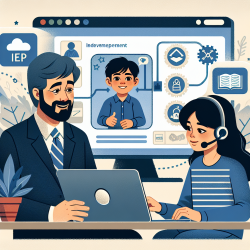The shift from face-to-face therapy to teletherapy has been a significant change in the way mental health services are delivered in schools. This transition has been accelerated by the COVID-19 pandemic, which necessitated remote interactions to ensure safety and continuity of care. While teletherapy offers numerous benefits, it also presents unique challenges for therapists and clients alike.
The Benefits of Teletherapy
Teletherapy provides several advantages that make it an attractive option for schools and mental health professionals. One of the primary benefits is increased accessibility. Students who live in remote areas or have mobility issues can now receive therapy without the need for travel. This is particularly beneficial for underserved communities where access to mental health services is limited.
Moreover, teletherapy can reduce the stigma associated with visiting a therapist's office. Students may feel more comfortable engaging in therapy sessions from the privacy of their own homes. Additionally, teletherapy allows for greater scheduling flexibility, accommodating students' busy academic schedules.
Challenges Faced by Therapists
Despite its benefits, teletherapy presents several challenges that therapists must navigate. One significant issue is establishing a strong therapeutic alliance with clients online. The lack of physical presence can make it difficult to build rapport and trust, which are crucial components of effective therapy.
Therapists also face technological barriers, such as unreliable internet connections and unfamiliarity with telehealth platforms. These issues can disrupt sessions and hinder the therapeutic process. Furthermore, therapists must adapt their interventions to suit the digital environment, which may not always be conducive to certain therapeutic techniques.
Adapting Therapeutic Interventions
The transition to teletherapy requires therapists to be innovative in their approach. Creative problem-solving is essential to adapt traditional therapeutic interventions for an online format. For example, therapists may need to use digital tools or modify activities to engage students effectively during virtual sessions.
Additionally, maintaining privacy and confidentiality can be challenging when conducting therapy sessions from home. Therapists must ensure that their clients have a secure and private space for sessions, free from interruptions or eavesdropping.
The Future of Teletherapy in Schools
The rapid adoption of teletherapy during the pandemic has highlighted its potential as a permanent fixture in school-based mental health services. As technology continues to evolve, it is likely that teletherapy will become more integrated into standard practice, offering a hybrid model that combines both in-person and virtual sessions.
For more information on this topic, please follow this link.










